
6.4 Sandbag Shelter Prototypes
4.4 Sandbag Shelter Prototypes, various locations
(Recipient of the Aga Khan Award for Architecture, 2004)
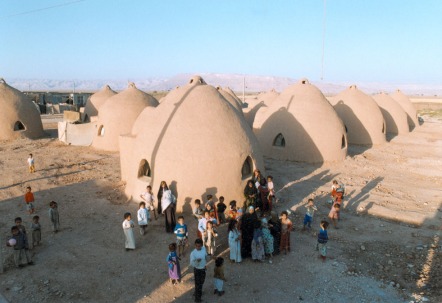
The global need for housing includes millions refugees and displaced persons – victims of natural disasters and wars. Iranian architect Nader Khalili believes that this need can be addressed only by using the potential of earth construction.
After extensive research into vernacular earth building methods in Iran, followed by detailed prototyping, he has developed the sandbag or ‘superadobe’ system. The basic construction technique involves filling sandbags with earth and laying them in courses in a circular plan. The circular courses are corbelled near the top to form a dome. Barbed wire is laid between courses to prevent the sandbags from shifting and to provide earthquake resistance. Hence the materials of war – sandbags and barbed wire – are used for peaceful ends, integrating traditional earth architecture with contemporary global safety requirements.
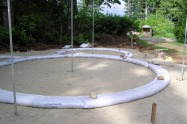
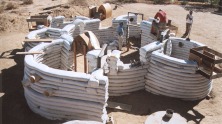
The system employs the timeless forms of arches, domes and vaults to create single and double-curvature shell structures that are both strong and aesthetically pleasing. While these load-bearing or compression forms refer to the ancient mudbrick architecture of the Middle East, the use of barbed wire as a tensile element alludes to the portable tensile structures of nomadic cultures. The result is an extremely safe structure. The addition of barbed wire to the compression structures creates earthquake resistance; the aerodynamic form resists hurricanes; the use of sandbags aids flood resistance; and the earth itself provides insulation and fireproofing.
Several design prototypes of domes and vaults were built and tested. The system is particularly suitable for providing temporary shelter because it is cheap and allows buildings to be quickly erected by hand by the occupants themselves with a minimum of training. The shelters focus on the economic empowerment of people by participation in the creation of their own homes and communities.
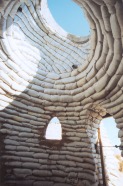
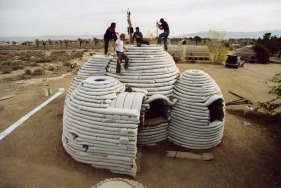
Each shelter comprises one major domed space with some ancillary spaces for cooking and sanitary services. Incremental additions such as ovens and animal shelters can also be made to provide a more permanent status and the technology can also be used for both buildings and infrastructure such as roads, kerbs, retaining walls and landscaping elements.
Because the structures use local resources – on-site earth and human hands – they are entirely sustainable. Men and women, old and young, can build since the maximum weight lifted is an earth-filled can to pour into the bags. Barbed wire and sandbags are supplied locally, and the stabilizer is also usually locally sourced.
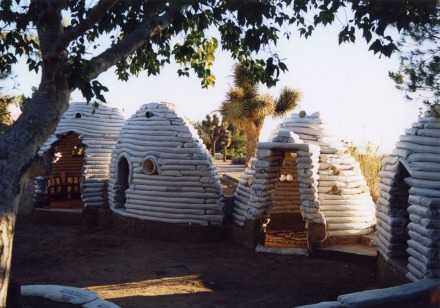
Since 1982, Nader Khalili has developed and tested the Superadobe prototype in California. In 1991 he founded the California Institute of Earth Art and Architecture (Cal-Earth), a non-profit research and educational organization that covers everything from construction on the moon and on Mars to housing design and development for the world’s homeless for the United Nations. Cal-Earth has focused on researching, developing and teaching the technologies of Superadobe. The prototypes have not only received California building permits but have also met the requirements of the United Nations High Commissioner for Refugees (UNHCR) for emergency housing. Both the UNHCR and the United Nations Development Programme have chosen to apply the system, which they used in 1995 to provide temporary shelters for a flood of refugees coming into Iran from Iraq.
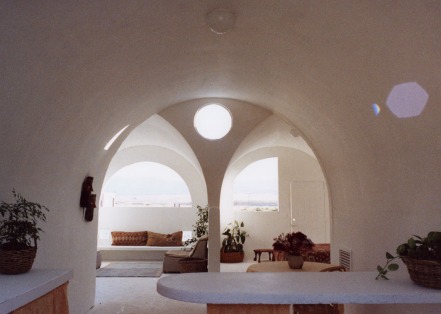
Khalili’s educational philosophy has also continued to develop. A distance-teaching programme is being tested for the live broadcast of hands-on instruction directly from Cal-Earth. Many individuals have been trained at Cal-Earth to build with these techniques and are carrying this knowledge to those in need in many countries of the world, from Mongolia to Mexico, India to the United States, and Iran, Brazil, Siberia, Chile and South Africa.
for Video Description click here
(Source: http://www.akdn.org/agency/akaa/ninthcycle/page_03txt.htm)